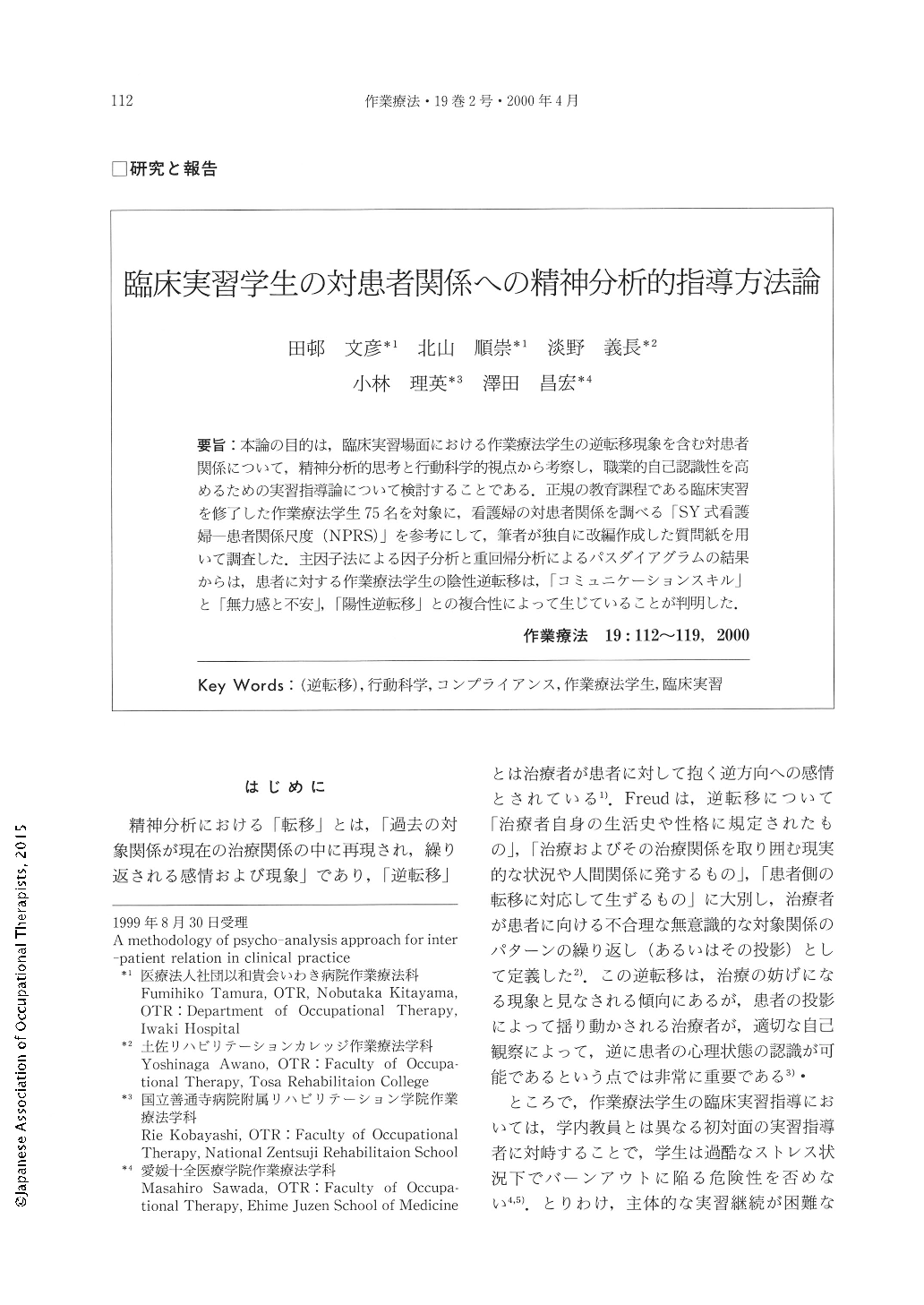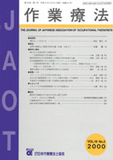Japanese
English
- 販売していません
- Abstract 文献概要
- 1ページ目 Look Inside
- 参考文献 Reference
要旨:本論の目的は,臨床実習場面における作業療法学生の逆転移現象を含む対患者関係について,精神分析的思考と行動科学的視点から考察し,職業的自己認識性を高めるための実習指導論について検討することである.正規の教育課程である臨床実習を修了した作業療法学生75名を対象に,看護婦の対患者関係を調べる「SY式看護婦—患者関係尺度(NPRS)」を参考にして,筆者が独自に改編作成した質問紙を用いて調査した.主因子法による因子分析と重回帰分析によるパスダイアグラムの結果からは,患者に対する作業療法学生の陰性逆転移は,「コミュニケーションスキル」と「無力感と不安」,「陽性逆転移」との複合性によって生じていることが判明した.
The purpose of this study was to examine the relationship between the counter-transference for patient and professional identity of occupational therapy students. The subjects included 75 occupational therapy students (male: 27 persons, female: 48 persons, 22. 19 ±2.13 year old) in training school. To examine the influence of the student-patient relationship on professional identity, we refer to the SY-formed nurse-patient relationship scale (NPRS) of 52 items relating to emotional interactions between nurses and patients in Sakurai's report (1998), and developed the special scale of 30 items. We obtained 10 factors through factor analysis for the special scale. Then we investigated the special scale through factor scores for factor analysis and determined the differences between the first factor and the other nine factors. The multiple regression analysis was performed with nine factors and the first factor as objective and explanatory variables, respectively. As a result, counter-transference of occupational therapy students proved to have a strong influence on the negative counter-transference (R2 = 0. 490, P<0. 001). Calculation of the standard partial regression coefficient revealed that "communication skill" (β = 0.363, P<0. 01). "powerlessness and anxiety" (β = 0. 285, P<0. 01) and "positive counter-transference" (β = 0.234, P<0. 05) had positive influences on the negative counter-transference of occupational therapy students for patients. The results suggested that negative counter-transference of occupational therapy students toward the mother-counter-transference. In this situation, we can easily suspect that the occupational therapist identifies with a narcissistic confidence. This phenomenon is frequently observed in human service professions, but the further this mother-counter-transference goes, the more easily the occupational therapist may become the self-estimation of his profession.

Copyright © 2000, Japanese Association of Occupational Therapists. All rights reserved.


